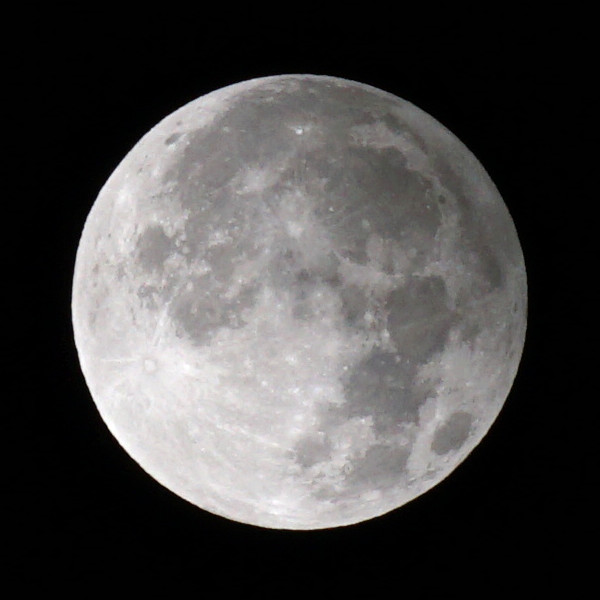Penumbral eclipse of moon

There was a penumbral eclipse of the moon last night. During a penumbral eclipse, the moon enters the penumbra of the Earth’s shadow, rather than the umbra, or the deep shadow. Unless I am mistaken, if you were in the penumbra, on the moon, you would see a partial eclipse of the sun. At any rate, the penumbral eclipse was supposed to last from 12:32 a. m. to 4:53 and peak at 2:42, Mountain Standard Time, this morning. I went out with my trusty digital camera and a 210-millimeter lens at about 12:30 and 1:30, but I could see nothing, and the photographs revealed nothing. At 2:40, however, I exposed the photograph above. Although I adjusted the exposure using Affinity software, the image is not doctored in any way. You can see a darkening of the limb in the upper-right corner. Once I saw the photograph in the camera, I could see the limb darkening with the naked eye, but evidently my retina was overexposed slightly, because I had to squint to see it. Given my lack of success at 1:30, I forwent the opportunity to take a picture at 3:30 and retired.
I had the good fortune to see a total eclipse of the sun and a total eclipse of the moon not very long ago. Unfortunately, the penumbral eclipse, though mildly interesting in principle, could not hold a candle to either of those.
